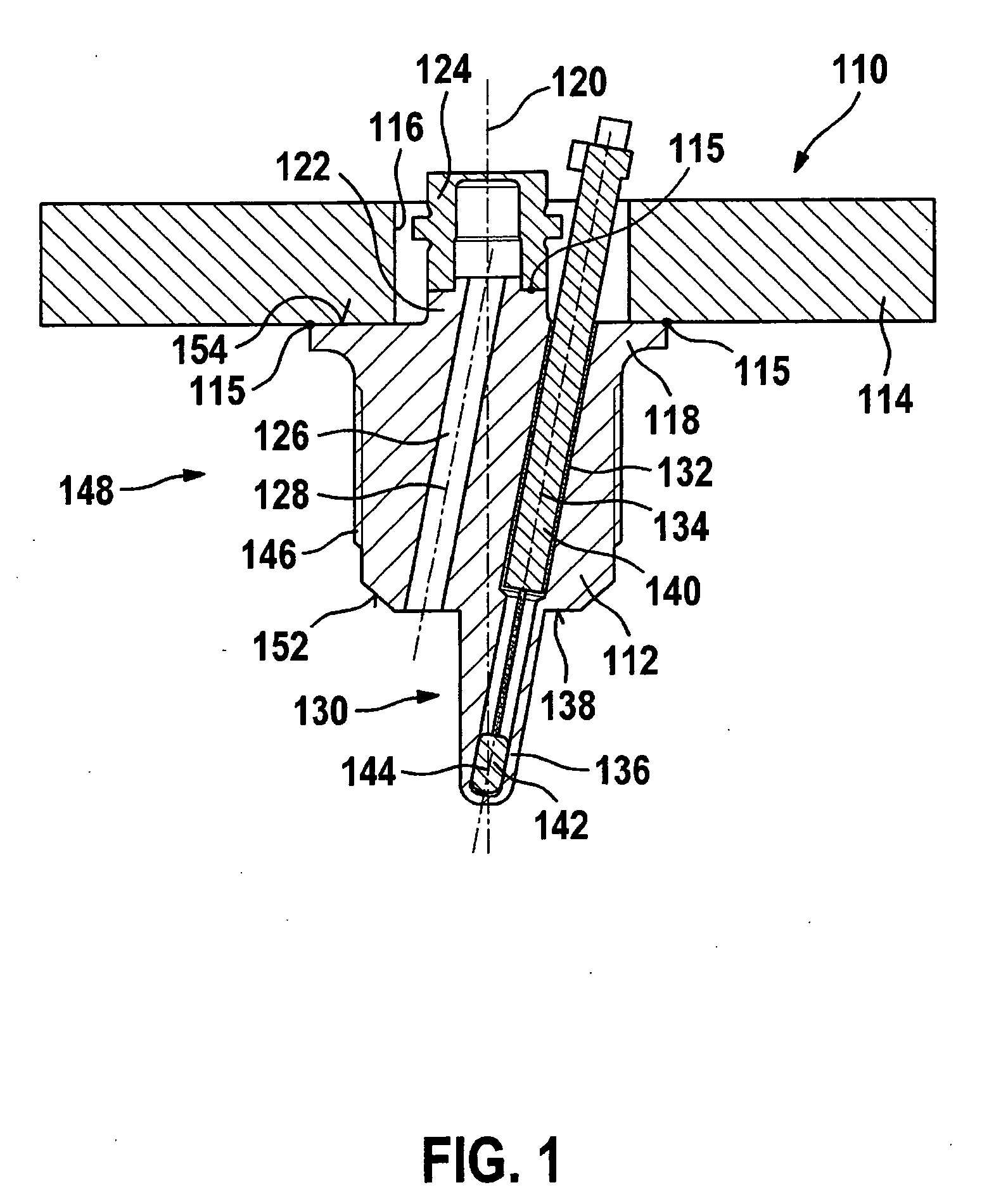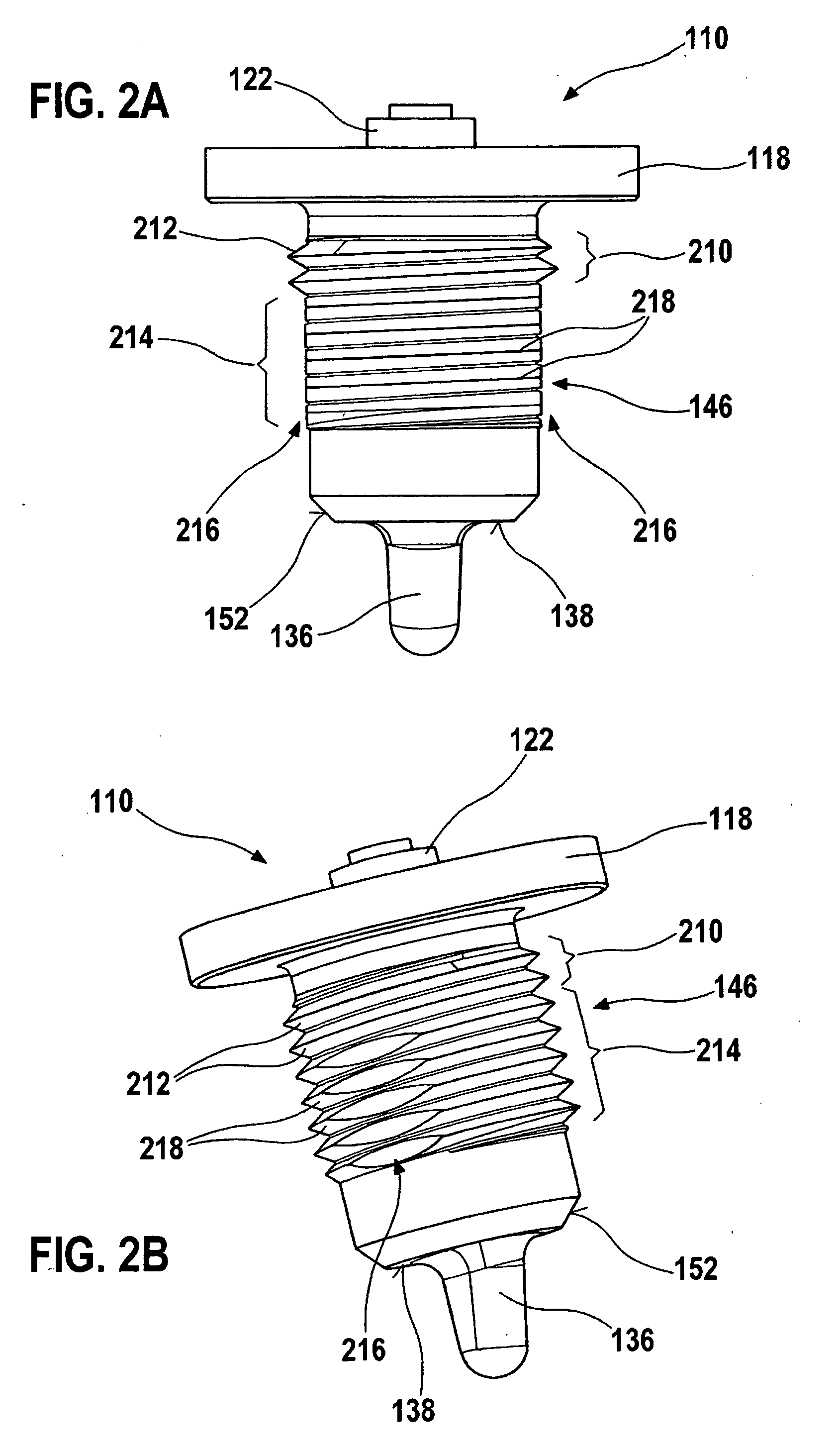Plug-in sensor for measuring at least one property of a fluid medium
a technology of fluid medium and plug-in sensor, which is applied in the direction of instruments, heat measurement, threaded fasteners, etc., can solve the problems of gaseous corrosive media from the environment reaching the sealing surface, damage to the sealing surface, and the use of two separate sensors for detecting pressure and temperature represents a considerable degree of complexity, so as to achieve simple and cost-effective mass production and increase the effect of threading torqu
- Summary
- Abstract
- Description
- Claims
- Application Information
AI Technical Summary
Benefits of technology
Problems solved by technology
Method used
Image
Examples
Embodiment Construction
[0030]FIG. 1 shows an exemplary embodiment of a plug-in sensor 110 according to the present invention in a sectional view. Plug-in sensor 110 has a sensor body 112. A hexagonal body 114 having a central bore hole 116 is provided above sensor body 112. Sensor body 112 is connected to hexagonal body 114 which may be via an integral joint 115 (for example, a weld) in such a way that sensor body 112 is situated concentrically to central bore hole 116, and the top of sensor body 112 is accessible through central bore hole 116. In this way, electronic trigger components may be situated on the top of hexagonal body 114 in FIG. 1, for example, plug connections for contacting plug-in sensor 110.
[0031]The integral joints of the individual components are labeled in FIG. 1 by reference numeral 115 in general. For the purpose of an integral joint 115, sensor body 112 has on its top, between sensor body 112 and hexagonal body 114, a projection 118 facing hexagonal body 114 and having a contact su...
PUM
| Property | Measurement | Unit |
|---|---|---|
| temperatures | aaaaa | aaaaa |
| angle | aaaaa | aaaaa |
| cone angle | aaaaa | aaaaa |
Abstract
Description
Claims
Application Information
 Login to View More
Login to View More - R&D
- Intellectual Property
- Life Sciences
- Materials
- Tech Scout
- Unparalleled Data Quality
- Higher Quality Content
- 60% Fewer Hallucinations
Browse by: Latest US Patents, China's latest patents, Technical Efficacy Thesaurus, Application Domain, Technology Topic, Popular Technical Reports.
© 2025 PatSnap. All rights reserved.Legal|Privacy policy|Modern Slavery Act Transparency Statement|Sitemap|About US| Contact US: help@patsnap.com



